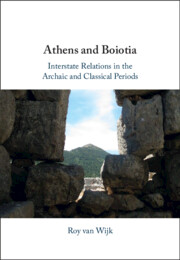Book contents
- Athens and Boiotia
- Athens and Boiotia
- Copyright page
- Dedication
- Contents
- Figures
- Acknowledgements
- Note on the Text
- Abbreviations
- Chronological Overview of Atheno-Boiotian Relations
- 1 Introduction
- 2 The Attic Neighbour?
- 3 That Sweet Enmity
- 4 Do Fences Make for Better Neighbours?
- 5 Contested Memories
- Conclusion
- Bibliography
- Index Locorum
- Index
- References
Bibliography
Published online by Cambridge University Press: 29 February 2024
- Athens and Boiotia
- Athens and Boiotia
- Copyright page
- Dedication
- Contents
- Figures
- Acknowledgements
- Note on the Text
- Abbreviations
- Chronological Overview of Atheno-Boiotian Relations
- 1 Introduction
- 2 The Attic Neighbour?
- 3 That Sweet Enmity
- 4 Do Fences Make for Better Neighbours?
- 5 Contested Memories
- Conclusion
- Bibliography
- Index Locorum
- Index
- References
Summary
- Type
- Chapter
- Information
- Athens and BoiotiaInterstate Relations in the Archaic and Classical Periods, pp. 386 - 434Publisher: Cambridge University PressPrint publication year: 2024
- Creative Commons
- This content is Open Access and distributed under the terms of the Creative Commons Attribution licence CC-BY-NC-ND 4.0 https://creativecommons.org/cclicenses/



